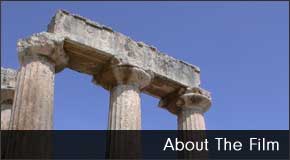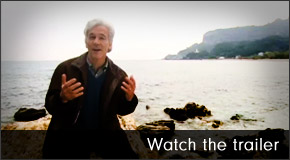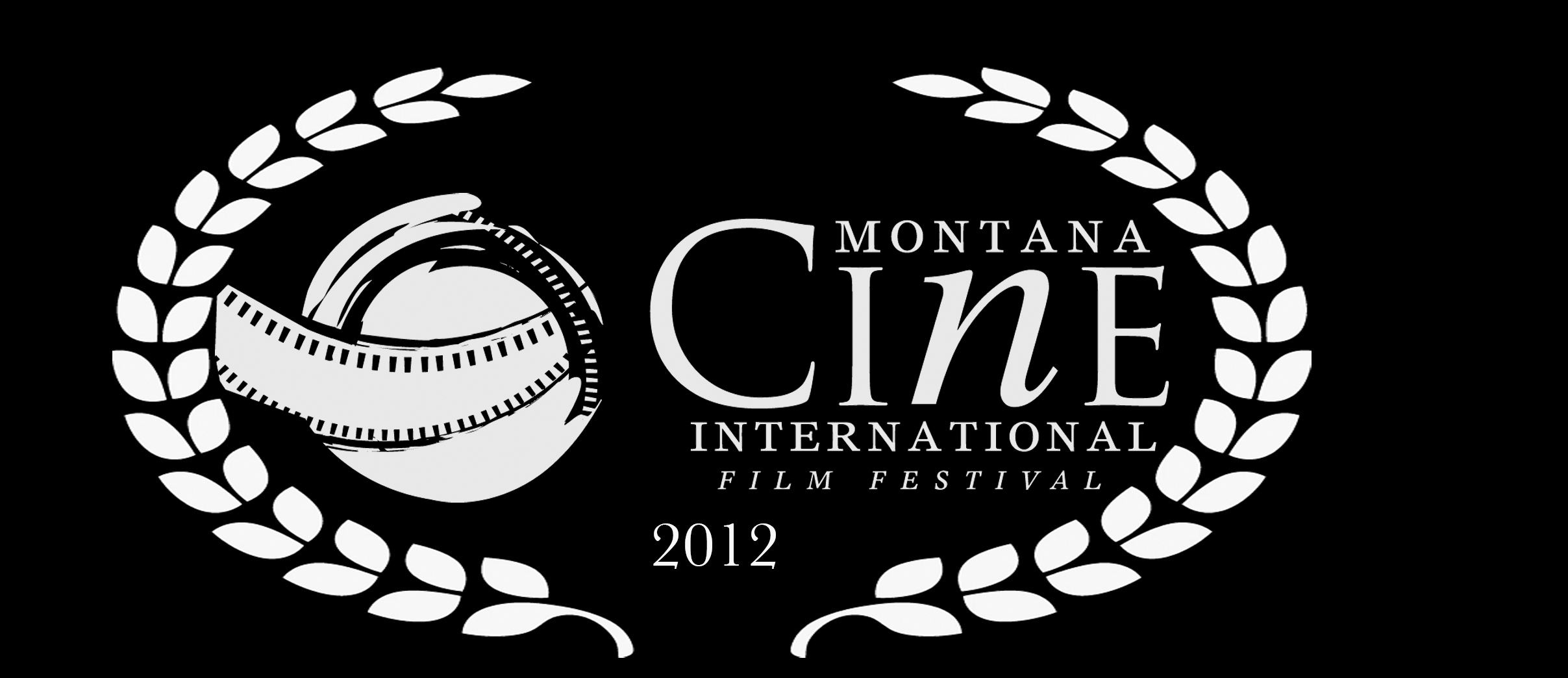Eyeopener: 'Journey of the Universe' on PBS
By Celia Wren
Commonweal Magazine
December 2, 2011
http://commonwealmagazine.org/eyeopener
Painted stars splay across the ceiling of an old Greek church. A flower blooms in slow motion. Tree roots twine serenely round the rocks of an ancient ruin. The images in the nonfiction film Journey of the Universe are luminously beautiful—and so well meshed that their flow feels almost effortless. But a great deal of effort has gone into this hour-long work, which aims to knit modern scientific knowledge and religious and humanistic perspectives into a seamless, eye-opening chronicle of cosmic and earthly evolution.
Indeed, the genesis of Journey—airing on PBS stations beginning December 3 (check local listings)—stretches back more than three decades, to the publication in 1978 of an article titled “The New Story,” by Thomas Berry, the influential thinker who taught at Fordham University and directed the Riverdale Center of Religious Research. “The New Story” argued that humans were positioned between important narratives—namely, the scientific narrative about the unfolding of the universe and the creation stories offered by religious traditions. Might a new narrative be possible—one that integrates these worldviews?
Mary Evelyn Tucker and Brian Thomas Swimme, scholars who worked closely with Berry (he died in 2009), have responded to the challenge. The two have coauthored both the film Journey of the Universe and the companion book, published by Yale University Press. Tucker, who codirects the Forum on Religion and Ecology at Yale University, has also done yeoman’s work on Journey’s educational DVD, hosting twenty half-hour conversations with scientists, educators, and environmentalists, including Sr. Marya Grathwohl, OSF, of Earth Hope in Wyoming, and Sr. Paula Gonzalez, SC, of EarthConnection in Cincinnati.
It’s the affable Swimme—professor at the California Institute of Integral Studies—who hosts the film, speaking with enthusiasm about matters like the Big Bang (he prefers the term “The Great Flaring Forth”); the arrangement of the solar system (he illustrates it with vegetables, using a cabbage for the sun); the significance of plate tectonics; the advent of life on earth; the nature of photosynthesis; and the development of art and language among humans. The film even addresses the phenomenon of compassion, suggesting that it is a natural, if rather marvelous, part of human evolution—perhaps an extension of the maternal instinct (a shot of a koala and her baby helps illustrate this theory).
As a viewer whose forays into physics and biology have, since college, been limited to glancing at theNew York Times “Science” section, I found the most remarkable strand in Journey to be the vision of humans and the cosmos as aspects of an organic whole: rather than creatures who happen to live inside a mechanistic reality, the show suggests, we are an expression of a continually creative universe. The Milky Way is best understood “not as a thing, but as...an ongoing activity.” At one point, Swimme relates that “some biologists are beginning to speculate that awareness has its foundation in the very self-organizing dynamic of the universe.”
This is heady stuff—had the film been shot inside a classroom, or even an observatory, you might doze off in five minutes. But Journey has been shot on the Greek island of Samos—the birthplace of the mathematician and philosopher Pythagoras. Swimme talks science while standing on a beach, exploring a ruined fortress, sitting in a tavern, examining beets at a produce stand. These scenes—which bookend more standard documentary-style footage of the galaxy, leaping antelopes, microscopic cells, and more—enhance the film’s accessibility. Rather than contemplating intimidating truths about the cosmos, you often feel that you are engaging in some enjoyable conversation with Swimme as you both wander around a sunny, scenic island—perhaps with a nice stop for a salad-and-moussaka lunch.
With lush photography and a rather ostentatiously stirring soundtrack—strings, harps, and soprano-heavy choral music—Journey (directed by Patsy Northcutt and David Kennard) sometimes exudes an irritatingly breathless vibe. Not every moment is upbeat and starry-eyed, of course. The film acknowledges the human-wrought environmental crises that loom ahead. But, as you might expect from a work that sees humanity and earth as essentially one continuum—a continuum that is able to learn—Journey asserts that we can adjust our habits and attitudes in such a way as to avert disaster.
“The energies coursing through us may indeed renew the face of the earth,” Swimme declares optimistically as he roams around Samos. Let’s hope he’s right—for the sake of those gorgeous Greek island vistas, if not for ourselves.
Web Exclusive: Between the Poles
AN INTERVIEW WITH MARY EVELYN TUCKER
By Celia Wren
Echoes of a long-ago geometry class may waft through the minds of viewers who catch Journey of the Universe, the science-themed film airing on PBS stations starting December 3. The film was shot on the island of Samos, birthplace of the ancient Greek philosopher and mathematician Pythagoras, who famously came up with the theorem, pertaining to right-angled triangles. Samos boasts a lot more than its Pythagorean legacy: In Journey, the island’s bucolic scenery sometimes steals the show. In an interview, I asked Journey co-writer and executive producer Mary Evelyn Tucker about the selection of Samos and other matters related to the film. Tucker is a senior lecturer and research scholar at Yale, where she has been appointed to the School of Forestry and Environmental Studies, the Divinity School, the Department of Religious Studies, and the Center for Bioethics. She directs the Forum on Religion and Ecology at Yale with her husband, John Grim, and teaches in the joint MA program in religion and ecology.
Celia Wren: Your academic specialty is Asian religions. How did your interest in religion and ecology come about?
Mary Evelyn Tucker: The origin of my interest in religion and ecology, one could say, was in going to Asia over the past forty years and traveling extensively through East Asia and South Asia—and especially through India and China, and realizing that these two great civilizations, each over a billion people, are going to change the face of the planet as they modernize.
We need to pay attention to this dialectic of environment and development, especially as it’s emerging on the Asian continent. I’ve been concerned about what kind of environmental ethics would be culturally based and sensitive to the religious dynamics of these ancient civilizations. It is certainly the case that, in principal, the traditions of Confucianism and Taoism and Buddhism and Hinduism have a very robust sensibility of human/earth relations, of living within a sense of the sacred community of life. Bringing those traditions forward was of great concern to me and many other scholars, whom we convened at Harvard for the three-year series on world religions and ecology. [Tucker and Grim organized the Conferences on World Religions and Ecology at the Center for the Study of World Religions at Harvard. These ran from 1995 to 1998, with a culminating conference at the United Nations in 1998.]
Wren: When did it become clear that the island of Samos was the right place to shoot Journey?
Tucker: We did give a great deal of thought to where to film. The decision came pretty early on in our writing process. We wanted to situate the film within a crossroads of civilization. Samos was a great center of the ancient world. The temple to Hera on the island was one of the largest temples in the ancient world, according to Herodotus. And of course the philosopher and mathematician Pythagoras lived there: His work joining together the humanities and sciences was a great inspiration. And it’s a beautiful island.
Wren: All the images in the film are quite gorgeous.
Tucker: It was a huge, huge effort to find the visuals—the right ones. And, of course, pay for them. And get the music!
Wren: Is our society making any progress in moving past the perception that science and religion are inherently at loggerheads?
Tucker: I think the conversation in the United States between religion and science has become very polarized, especially through the media, which doesn’t allow for nuances and more of a dialogue—it becomes almost a shouting match between extremes. But in many parts of the rest of the world—across Asia for example, where almost two thirds of the people live—this kind of tension is not so prominent and exacerbated. This is a U.S. phenomenon.
I think we need—and hopefully a film like this may illustrate this—for this tension to be overcome in a way that’s going to be productive for the future of the planet. Science has given us an enormous amount of knowledge and information on our environmental crises, ranging from climate change to pollution, to loss of ecosystems, to diminishment of water resources, and so on. At the same time, the world’s religions are beginning to come on board for a more robust and diversified environmental ethics based on the principals of each of the world’s religions; these ethics are going to look different from a Hindu perspective or a Buddhist, Christian, Jewish or Islamic perspective. I think we need to come to common ground: A flourishing future depends on a shared future, and that means we’ve got to overcome the differences between science and religion, and even the differences among the religions themselves. Our greatest efforts need to go for the continuity of life and the planet.












 Share Article
Share Article
Reader Comments